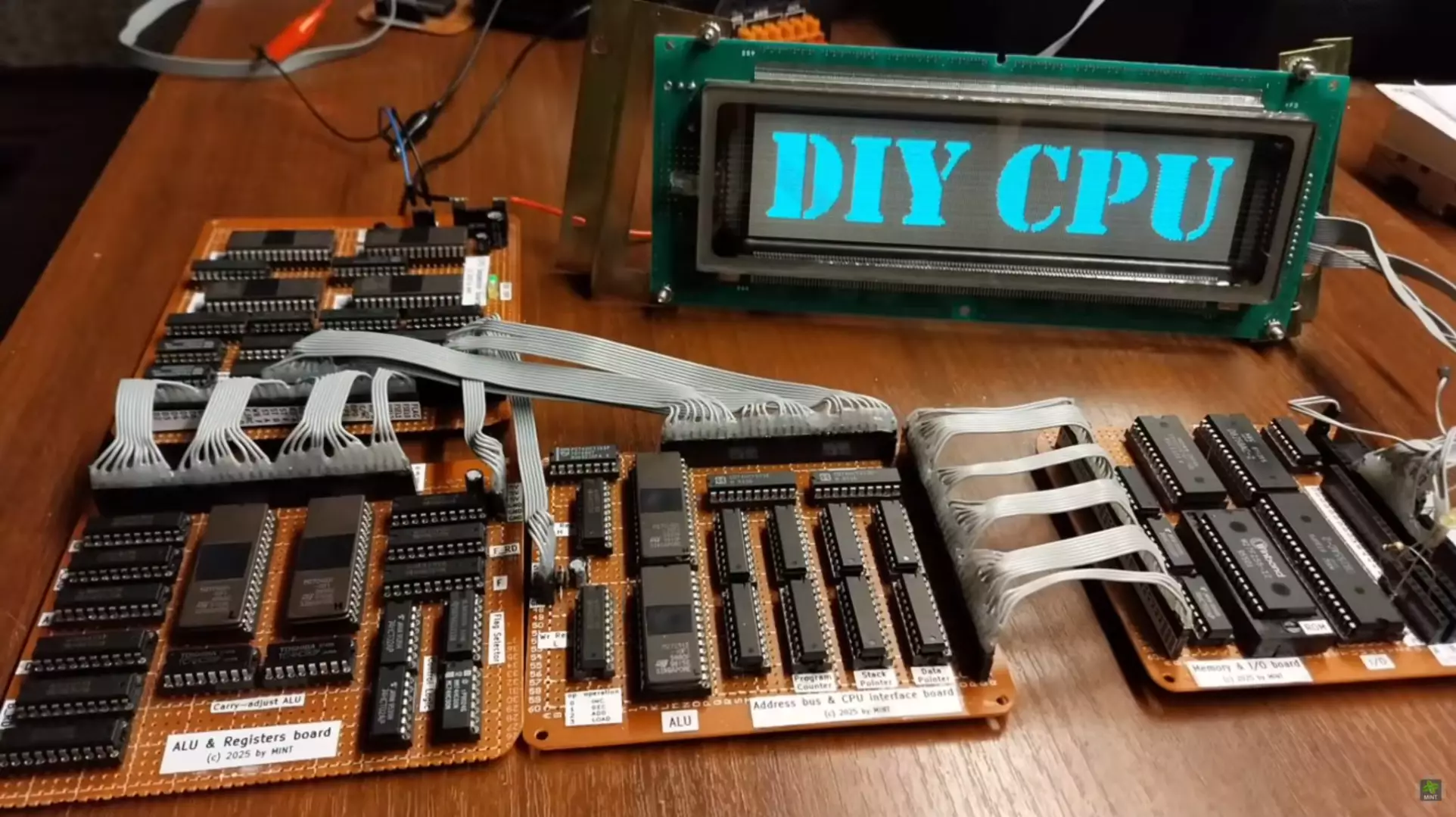In an era dominated by mass-produced technology and rapid manufacturing cycles, the act of crafting a functional central processing unit (CPU) from scratch stands out as an extraordinary testament to individual ingenuity. The recent project by Polish enthusiast Majsterkowanie i nie tylko (MINT), showcased on YouTube, pushes the boundaries of what we consider achievable for a hobbyist. His painstaking effort to assemble a working 8-bit CPU using vintage components demonstrates that passion and curiosity can forge pathways into the intricate world of computer architecture, even without a corporate lab or vast financial backing. This project not only challenges the traditional narrative of technological innovation but also empowers enthusiasts to believe that understanding and recreating fundamental computer functions is within reach.
Reviving the Past to Understand the Future
MINT’s decision to focus on retro microprocessors such as the Zilog Z80 is a conscious nod to the roots of personal computing. Leveraging decades-old memory chips and microcomponents, he embodies a remarkable blend of reverence for technological history and modern DIY spirit. What’s striking is the transformation of seemingly obsolete parts into the building blocks of a functional CPU—an act that underscores the timelessness of engineering principles. His journey from experimenting with memory chips as simple control units to designing and soldering a full CPU over three months exemplifies how foundational knowledge can be harnessed creatively. This endeavor signifies more than a technical feat; it’s a philosophical statement about the democratization of technology and the unending human desire to understand how things work.
Technical Mastery as a Form of Artistic Expression
Building a CPU at home is far from a trivial pursuit. It requires meticulous planning, deep comprehension of microarchitecture, and relentless patience. MINT’s video documents numerous intricacies—from wiring individual memory cells to handling signal integrity—showcasing his mastery over hardware soldering and circuit design. Despite the complexity, he makes a compelling argument that such projects are accessible to anyone willing to learn. More importantly, this DIY CPU isn’t merely an educational tool; it’s an art form—an expression of perseverance and curiosity. It reinforces that technology doesn’t exist solely within the sterile confines of labs but thrives in the hands of individuals who challenge conventions.
A New Perspective on Hardware and Creativity
Perhaps the most inspiring aspect of MINT’s project lies in its philosophical implications. In an age where most consumers see hardware as a black box, relying on a few clicks to assemble their gaming rigs or workstations, the act of building a CPU from scratch reintroduces a sense of craftsmanship. It reminds us that behind every digital command, there’s an intricate dance of electrons and transistors that originated from human ingenuity. By reconstructing this process on a DIY scale, MINT offers a new lens through which to appreciate technology—not as an abstract, inaccessible domain but as something tangible and understandable. This project exemplifies how curiosity-driven experiments can deepen our connection to the devices we depend on daily, fostering a more mindful and innovative approach to technology.
Implications for Future Hobbyists and Technologists
The narrative of this DIY CPU project resonates far beyond its technical specifics. It stands as a rallying cry for aspiring engineers, hobbyists, and students to venture into uncharted territory. In a landscape where expertise is often gatekept by monetary barriers and proprietary knowledge, projects like MINT’s unveil the potential inherent in open exploration and resourcefulness. The message is clear: you don’t need a multi-million-dollar research grant to understand or create something complex. Building that CPU isn’t just an educational exercise; it’s a movement towards reclaiming the joy of creation, fostering innovation from the ground up, and appreciating the foundational elements of our digital world. Such endeavors reinforce the notion that curiosity, patience, and a willingness to learn can open doors to remarkable achievements—no corporate endorsement required.

